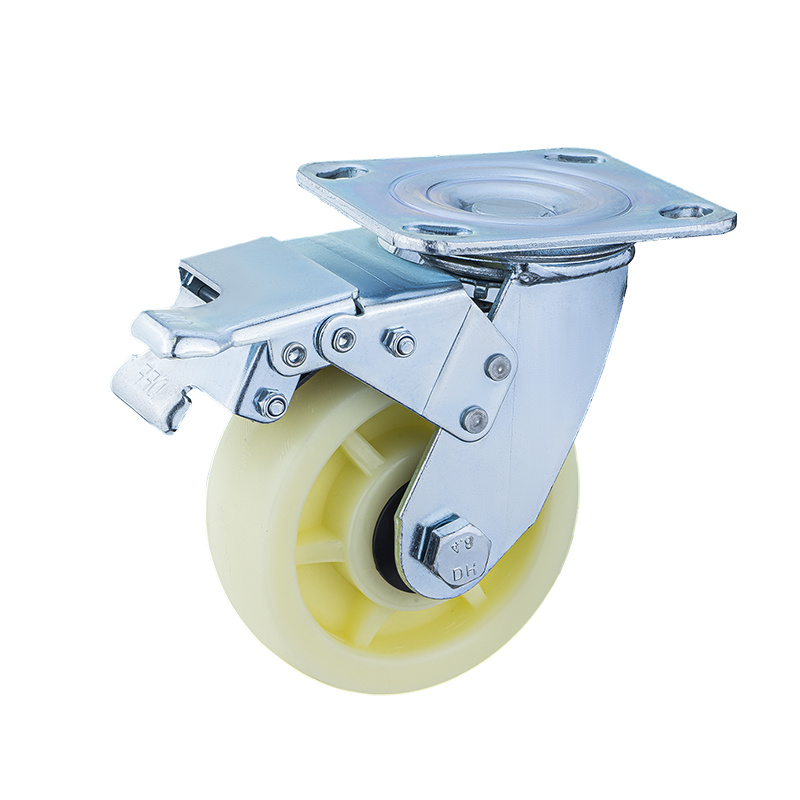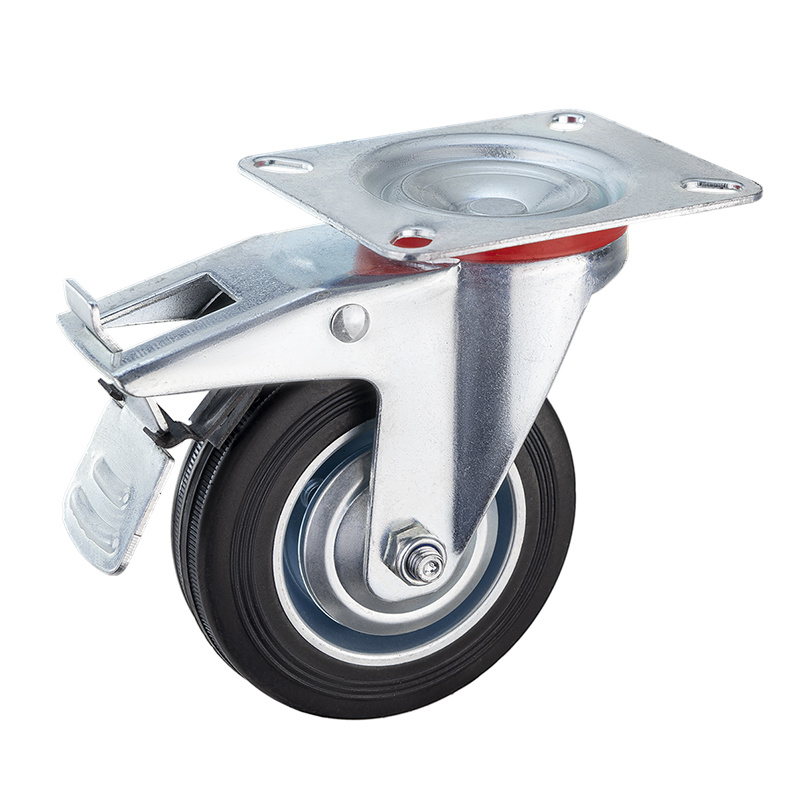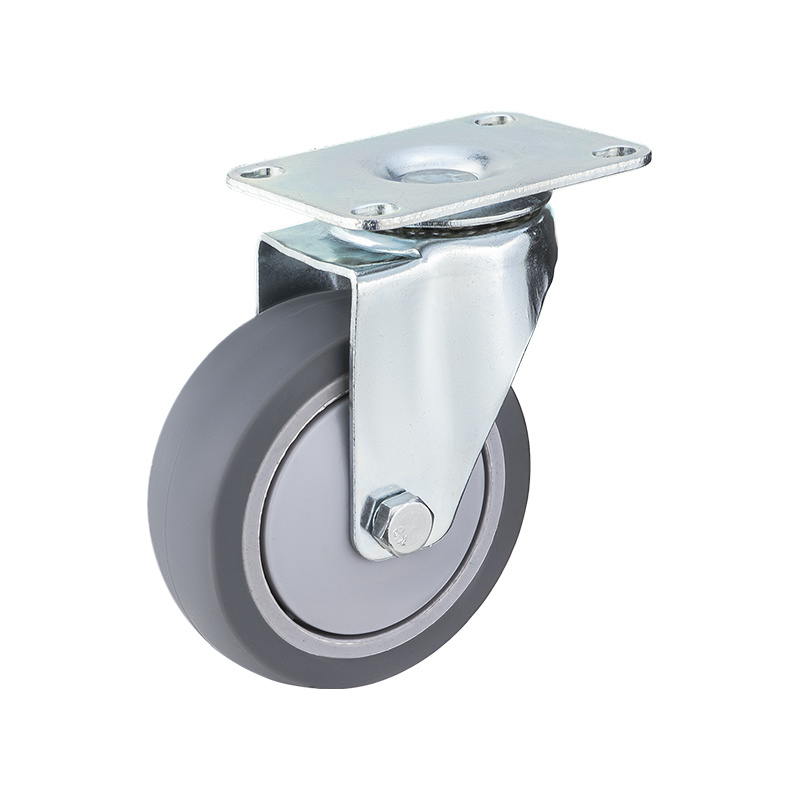BLOG
Understanding Load Ratings: How to Choose Your Medium Duty Caster for Optimal Performance
2025-05-10
Understanding Load Ratings: How to Choose Your Medium Duty Caster for Optimal Performance
Table of Contents
Introduction to Medium Duty Casters
Understanding Load Ratings for Casters
Factors Affecting Load Capacity
Materials and Design Considerations
How to Choose the Right Medium Duty Caster
Applications for Medium Duty Casters
Maintenance and Care for Longevity
F
Understanding Load Ratings: How to Choose Your Medium Duty Caster for Optimal Performance
Table of Contents
- Introduction to Medium Duty Casters
- Understanding Load Ratings for Casters
- Factors Affecting Load Capacity
- Materials and Design Considerations
- How to Choose the Right Medium Duty Caster
- Applications for Medium Duty Casters
- Maintenance and Care for Longevity
- Frequently Asked Questions (FAQs)
- Conclusion
Introduction to Medium Duty Casters
Medium duty casters play an essential role in various industries, providing mobility and ease of transport for a wide range of equipment and materials. They are typically designed to support loads ranging from 150 to 1,200 pounds, making them ideal for applications where strength and durability are required without the bulkiness of heavy-duty casters. Understanding how to choose the right medium duty caster is crucial for optimizing performance, safety, and efficiency in your operations.
In this article, we will delve into the intricacies of load ratings, factors that affect load capacity, and how to select the appropriate caster for your specific needs.
Understanding Load Ratings for Casters
Load ratings are perhaps the most critical aspect of selecting a caster. They indicate the maximum weight a caster can safely support when evenly distributed. Familiarizing yourself with these ratings ensures that the caster you select will perform effectively without the risk of failure.
The Importance of Load Ratings
Understanding load ratings is vital because using a caster that cannot support the required weight can lead to accidents, equipment damage, and operational inefficiencies. Load ratings are generally categorized as follows:
1. **Light Duty**: Up to 150 pounds
2. **Medium Duty**: 150 to 1,200 pounds
3. **Heavy Duty**: Over 1,200 pounds
When choosing a medium duty caster, consider both the load it needs to support and any additional factors that may affect performance, such as the dynamic load created by movement.
Static vs. Dynamic Load Ratings
It’s essential to differentiate between **static and dynamic load ratings**. Static load ratings refer to the maximum weight a caster can support when stationary, while dynamic load ratings account for the stresses placed on the caster during movement. For optimal performance, ensure that your chosen caster can handle both static and dynamic loads effectively.
Factors Affecting Load Capacity
Several factors can influence the load capacity of a medium duty caster. Understanding these elements can help you make a more informed choice.
Wheel Material
The material of the caster wheel significantly affects load capacity. Common materials include:
- **Rubber**: Offers excellent shock absorption and is ideal for delicate surfaces. However, they may not handle heavy loads as well as some harder materials.
- **Polyurethane**: Offers a balance of durability and shock absorption, making it suitable for various applications, including those with hard surfaces and heavy loads.
- **Steel**: Provides maximum strength and durability but can damage softer surfaces. Ideal for industrial applications.
Select the right material based on your specific use case and the surfaces on which the caster will be used.
Wheel Size and Design
Wheel size influences not just load capacity but also maneuverability and ease of movement. Larger wheels typically roll easier and can distribute weight more evenly, reducing the risk of damage to both the caster and the floor. Additionally, wheel design, such as swivel versus fixed, can also impact performance.
Environmental Conditions
Consider the environment in which the caster will operate. Factors like temperature, humidity, and exposure to chemicals can affect both the load capacity and durability of the caster. For instance, if the caster will be used in wet or corrosive environments, opting for wheels made from rust-resistant materials is advisable.
Materials and Design Considerations
Choosing the right caster involves not only understanding the load ratings but also the design and materials used in manufacturing.
Durability and Strength
When selecting a medium duty caster, prioritize durability and strength. Casters made from high-quality materials will not only support heavier loads but also withstand wear and tear over time. Look for casters with reinforced plates and robust mounting options for enhanced stability.
Brake Options
Brakes are an essential feature for many applications, providing added safety and control. There are several types of brakes to consider:
- **Total Lock Brakes**: Lock the wheel and swivel, preventing any movement.
- **Directional Lock Brakes**: Lock the swivel while allowing the wheel to roll freely in a straight line.
Choosing the right brake type depends on your operational needs and the level of control required.
How to Choose the Right Medium Duty Caster
Selecting the right medium duty caster involves a systematic approach to ensure you meet your specific requirements.
Step 1: Calculate the Total Load
Begin by determining the total weight that the caster will need to support. This includes not just the weight of the item being transported but any additional equipment or materials that might be added.
Step 2: Consider the Environment
Evaluate the environment in which the caster will be used. Are there any unique conditions that could affect performance, such as exposure to chemicals or extreme temperatures?
Step 3: Select the Right Wheel Material and Size
With the total load and environmental conditions in mind, choose a wheel material that aligns with your needs. Larger wheels may be preferable for uneven surfaces, while smaller wheels can be ideal for tight spaces.
Step 4: Determine Brake Requirements
Assess whether your application requires brakes for safety and control. If so, select the appropriate brake type based on how you need the caster to function.
Step 5: Review Assembly and Maintenance Needs
Consider how easy the caster will be to install and maintain. Look for casters that offer user-friendly assembly and require minimal maintenance for long-term performance.
Applications for Medium Duty Casters
Medium duty casters are versatile and can be utilized in various applications, including:
Industrial and Warehouse Use
In industrial settings, medium duty casters are often used for moving pallets, carts, and other heavy equipment. Their strength and durability make them ideal for warehouse environments.
Healthcare Facilities
In healthcare, mobility is crucial. Medium duty casters are commonly found on hospital beds, medical carts, and equipment, facilitating easy movement while ensuring safety.
Office Furniture
Medium duty casters are also used on office chairs, desks, and mobile workstations, offering smooth mobility and convenience in office environments.
Maintenance and Care for Longevity
Proper maintenance of medium duty casters is vital for ensuring long-lasting performance.
Regular Inspections
Conduct routine inspections to check for wear and tear, looseness, and any damage to the wheels or mounting plates. Early detection of issues can prevent costly repairs.
Cleaning and Lubrication
Keep the casters clean and free from debris. Regular lubrication of the wheel bearings will enhance movement and extend the lifespan of the caster.
Replacement Parts
Be prepared to replace worn-out parts, such as wheels or brakes. Having replacement components on hand will minimize downtime and maintain operational efficiency.
Frequently Asked Questions (FAQs)
1. What is the difference between static and dynamic load ratings?
Static load ratings refer to the maximum weight a caster can support when stationary, whereas dynamic load ratings account for the stresses during movement.
2. How do I determine the load capacity I need for my application?
Calculate the total weight of the items being transported, considering any additional equipment or materials that might be added.
3. What materials are best for medium duty casters?
Common materials include rubber, polyurethane, and steel, each offering different advantages based on the environment and use case.
4. How often should I perform maintenance on my casters?
Regular inspections should be conducted, and cleaning and lubrication should be performed as needed to ensure optimal function.
5. Can I use medium duty casters in outdoor environments?
Yes, but it's essential to select casters made from weather-resistant materials to withstand outdoor conditions.
Conclusion
Choosing the right medium duty caster requires a clear understanding of load ratings, materials, and application needs. By carefully considering factors such as load capacity, wheel material, and environmental conditions, you can select a caster that ensures optimal performance and safety. Regular maintenance and proper care will further enhance the longevity and reliability of your casters, making them an invaluable asset in various settings. Whether in industrial, healthcare, or office environments, the right medium duty caster can significantly improve efficiency and mobility.
Key words:
RELATED NEWS
Heavy Duty Caster Trends: What's New in the Market?
2025-05-24
Heavy Duty Caster Trends: What's New in the Market?
Introduction to Heavy Duty Casters
Heavy-duty casters are essential components in various industries, providing mobility and stability for equipment, furniture, and materials. With advancements in technology and design, the heavy-duty caster market is continually evolving. In this article, we will explore the latest trends in heavy-duty casters,
Mastering the Essentials of Industrial Casters for Optimal Performance
2025-05-17
Industrial casters are vital components in various industries, especially in the realm of hardware tools and accessories. Understanding these components can significantly impact your operations, whether you're involved in manufacturing, warehousing, or logistics. This article delves into the essential features, types, and maintenance tips related to industrial casters, aiming to equip you with pra
Understanding Load Ratings: How to Choose Your Medium Duty Caster for Optimal Performance
2025-05-10
Understanding Load Ratings: How to Choose Your Medium Duty Caster for Optimal Performance
Table of Contents
Introduction to Medium Duty Casters
Understanding Load Ratings for Casters
Factors Affecting Load Capacity
Materials and Design Considerations
How to Choose the Right Medium Duty Caster
Applications for Medium Duty Casters
Maintenance and Care for Longevity
F








